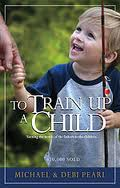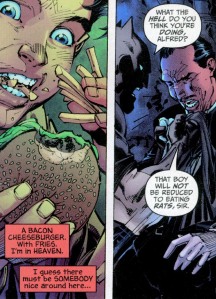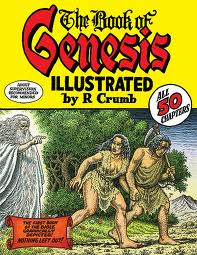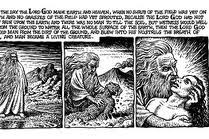In 2006, four-year-old Sean Paddock suffocated in a blanket his mother tied too tightly to stop him from getting out of bed. She’s now serving a life sentence for felony child abuse and first-degree murder. She was a follower of Michael Pearl’s parenting manual To Train Up a Child, which warns never to put a child “down and then allow him to get up…. To get up is to be on the firing line and get switched back down.”
In 2010, seven-year-old Lydia Schatz died after being beaten with a plumbing tube. Her father is serving a minimum of 22 years for second degree murder and torture, her mother 13 for voluntary manslaughter and unlawful corporal punishment. They were following Michael Pearl’s advice: “a plumber’s supply line is a good spanking tool. You can get it at Wal-Mart or any hardware store. Ask for a plastic, ¼ inch, supply line. They come in different lengths and several colors; so you can have a designer rod to your own taste.”
In 2011, 13-year-old Hana Grace-Rose Williams died of malnutrition and hypothermia in her backyard. Her father received 28 years in prison, her mother 37. What do you call these people? Michael Pearl, a fundamentalist pastor and founder of the non-profit organization No Greater Joy, says they are good, Christian parents. “Prove that you are bigger, tougher,” teaches Pearl. “Defeat him totally.”
Frank Miller calls these people “Batman.”
Miller and artist Jim Lee stirred up DC in 2005 with their All Star Batman and Robin and its portrayal of a Pearl-style Bruce Wayne abusing his own adopted child. According to a Sheriff’s report, the Williams deprived their adoptive daughter “of food for days at a time and had made her sleep in a cold barn.” Batman keeps Robin in an empty cave and tells him to catch rats if he’s hungry. If he cries, he gets slapped. When Alfred interferes by supplying the twelve-year-old with a blanket and an order of fast food, Batman threatens his butler physically.
Pearl would approve. “It has come to my attention,” writes the evangelist, “that a vocal few are decrying our sensible application of the Biblical rod in training up our children. I laugh at my caustic critics, for our properly spanked and trained children grow to maturity in great peace and love.”And sure enough, Batman’s tough love program quickly transforms Dick Grayson from a whimpering orphan to a power-punching Batman Jr.
Miller is an evangelist too. His God is the Manichean kind of absolute good vs. evil, the one little Bruce Wayne prayed to when he swore “by the spirits of my dead parents to avenge their deaths by spending the rest of my life warring on all criminals.” Miller expanded that dark vision to new depths in the early 90’s with Sin City—while Pearl was self-publishing his parenting manual. The D.A. who prosecuted the Shatz case called To Train Up A Child “truly an evil book.”
In 2009, while the Schatzes were still beating their children with plastic tubing, Pearl was applying his comic book vision of good and evil to an actual comic book titled Good and Evil. He advertises his Bible adaptation as “The Ultimate Superhero Graphic Novel!” and explains that he didn’t want “typical religious art” but “the traditional comic look that is so familiar all over the world.” It’s drawn by Danny Bulanadi, a former Marvel and DC artist whose 1979 Man-Thing is in my attic box of childhood comics. His 80s and 90s credits include Conan, Captain America, Blue Beetle, Hulk, Indiana Jones, Fantastic Four, and The Micronauts. After becoming a born again Christian, Bulanadi, according to the introduction, “was not comfortable with the work he was doing and so quit.” I’m not sure what exactly he was uncomfortable with, since Good and Evil encapsulates the same comic book values as most other superhero stories.
Pearl says it’s “impossible to cover the entire Bible,” so he selects “just that Old Testament background that is pertinent”—which apparently means adding a few supervillain scenes. “The Bible,” according to Pearl, “tells us God created numerous kinds of angelic beings to offer praise around his throne, but one called Lucifer led a third of them in rebellion.” Tales of rebellious angels don’t appear till the Book of Isaiah, yet Pearl needs us to know about them on page one. “But,” he adds, “this is not their story.”
Except it kinda is. We haven’t gotten through the first week of creation before Bulanadi’s sketching evil eyes peering from the blackness of his panels. “On the sixth day,” Pearl declares, “with the evil ones watching, God formed a new creature from the dust of the ground.” They’re there again a page later as God is forming Eve: “Satan, the Evil One, watched.” Two more panels and Bulanadi is drawing a bipedal lizard monster that would look at home in Tales to Astonish: “Satan hated God and wanted to destroy what God was doing, but he needed a way to communicate with Eve, so he entered the body of a beautiful creature and spoke through its mouth.” Pearl and Bulandi disagree about the adjective “beautiful,” but, more importantly, Pearl disagrees with God. According to Genesis 3:1, “the serpent was more crafty than any other beast of the field that the Lord God had made”—Lucifer isn’t a “beast of the field,” and there’s nothing in the Bible suggesting he “entered” it. But Pearl loves to play up God’s arch-nemesis. “Here is promise of a future battle,” he tells us, as Bulanadi’s lizard monster morphs into a snake. Pearl, like most comic book writers, just wants more fight scenes.
If you’re looking for a faithful adaptation, I suggest Robert Crumb’s The Book of Genesis Illustrated. If you’re also familiar with Crumb’s Bible of Filth (it includes the outrageously incestuous “A Family that LAYS Together STAYS Together”), you’ll assume he’s out to lampoon Christianity again. The prominent cover warning, “Adult Supervision Recommended for Minors,” doesn’t help. But you’d be wrong. Crumb’s drawings are respectful. Yes, he, unlike Bulanadi, forgoes conveniently angled vegetation, so there are plenty of full-frontals of Adam and Eve in the Garden, but no sex, just a little cuddling, all of it in God’s benevolent presence.
God’s long beard and robe are a cliché, but they bring out the odd thing about Bulanadi’s God. He’s invisible. The tails of his squiggly talk bubbles point at nothing. When he “formed a new creature from the dust of the ground,” Bulanadi draws the dust forming itself. When “God breathed his own life into the body of clay,” Bulanadi’s glowing cyclone of holy oxygen swirls from off-panel. But Crumb places God front and center, getting his hands dirty and embracing Adam as he exhales into his nostrils.
Crumb also includes all of God’s words. “Every other comic book version of the Bible I’ve seen,” he writes, “contains passages of completely made-up narratives and dialogue, in an attempt to streamline and ‘modernize’ the old scriptures, and still, these various comic book Bibles all claim to adhere to the belief that the Bible is ‘the Word of God,” or “Inspired by God,” whereas I, ironically, do NOT….” Sure enough, go to the No Great Joy website and you’ll learn that “the sixty-six books of the King James Version, nothing added or deleted, constitute the whole of Scripture ‘given by inspiration of God’ to English speaking people.” Crumb uses the King James too, but unlike Pearl, he includes “every word of the original text.”
Pearl’s selectiveness privileges some ideas over others. His Genesis keeps repeating “obey” and “rebellion,” the same words he emphasizes to such destructive ends in To Train Up A Child. His comic book God demands absolute obedience, and so the obedient Pearl demands absolute obedience from children. Part of a child’s training, explains Pearl, “is to come submissively. However, if you are just beginning to institute training on an already rebellious child . . . then use whatever force is necessary to bring him to bay.” And this is justified because Adam’s “willful and direct disobedience to God resulted in legal estrangement from God and precipitated the curse of death on Adam and all his descendants.”
But don’t worry—a diet of beatings and cave vermin can fix that. Alfred may disagree, refusing to be Batman’s “slave,” but Robin gets with the righteous program. When you live in a comic book world of Good and Evil, choices are easy. Robin’s adoptive father, like Pearl, is a divinely pledged instrument of absolutism. And, hey, who doesn’t want to be Batman?






It’s hard to read those opening paragraphs, yikes… This so-called manual sounds horrible. Chris, I can see why you’ve connected Pearl’s comic to Miller’s Batman, but I’d be interested to hear more about how far you go in extending this criticism to the violence in superhero comics more generally. Bulanadi’s quote that he “was not comfortable with the work he was doing and so quit” really caught my attention. Readers seem to accept all kinds of brutality in comics as long as the right motives are there (“right” being relative, of course – except maybe not for Bulanadi?). So I guess what I’m asking is does Pearl’s comic make explicit a problem you have with the superhero genre as a whole or is this really just about how comic book superheroes amplify his particularly warped views?
Qiana, good question, and it’s one I’m still thinking about. I’d say superheroes reduce the universe to good/evil, and ultimately that dichotomy is destructive because it permits and even mandates extreme behavior. It’s Pearl’s attempt to follow absolute goodness that causes such harm. That sort of superhero mentality doesn’t fit into the real world because the real world is overwhelmingly gray, not black and white at all. So, yes, it is a problem with the superhero genre overall.
I think superheroes can be about good/evil binaries…but they can also be about questioning them. Ben Saunder’s book “Do The Gods Wear Capes?” talks about this at length. Also, it’s worth noting that historically a ton of the best/most important superhero comics have been parodies, and a lot of what gets parodied is the notion of absolute good/evil. I’m thinking of everything from Plastic Man to the 60s Batman tv show to Watchmen (which is pretty easy to see as a superhero parody, I think.)
Even Miller’s work has elements of parody; you’re reading it against itself here, but there’s at least some sense that those books are meant to be read against themselves, or at least don’t discourage that reading.
Not to deny that lots of superhero product is horrible and ideologically repulsive. I just think critique has been a really important part of the genre throughout (enough so that your use of superheroes here to criticize Pearl could be seen as part of the superhero genre itself.)
I agree, Noah. Perhaps I should say “unexamined” superheroes, stories that blindly perpetuate the good/evil dichotomy.
I love pieces like this that put comics in conversation with other texts.
That dude’s book is scarier than Frank Miller’s islamophobic rants b/c apparently people take it seriously.
Bulanadi may have been most upset with his involvement with ‘Ghost Rider’, the most ‘satanic’ of Marvel characters.
A number of cartoonists have been ‘born again’ into fundamentalism, including Sal Buscema, Rick Griffen, Brian Buniak, Nestor Redondo, and Murphy Anderson.
Add Kerry Gamill to the above list….
That child abuse stuff is awful.
Moving back to comics:
As Noah pointed out, it’s really not clear whether All Star Batman should be read as parody, is it?
Doesn’t Robin go on to become the new Joker in Miller’s Dark Knight Strikes Again? Doesn’t that leave room to suggest that Batman’s actions are questionable? Tough love didn’t work out so well in the end… (I think Miller said he considers all his Batman stories to be in the same continuity)
Miller’s characterization of Batman became more unlikeable and bizarre over time. I first noticed it in his Batman/Spawn crossover in the nineties, which I took as a parody or perhaps derision upon first reading. Violent and far-fetched as they were, the Batmen of Dark Knight Returns and Year One were believable, kind, and even charming compared to the one in All-Star. It’s as if Miller lost all respect and affection for the character at some point — which is fine, but I would think telling Batman stories would be contraindicated after that.
I’d never heard of Pearl before this, but he is apparently one of those self-professed Christians who make the rest of us ashamed. I know there are limits on free speech, and I wouldn’t think a book that seems to promote felony child abuse would be protected.
It’s interesting that Pearl wants the parent to prove he or she is “bigger, tougher,” and to “defeat [the child] totally.” The consequences of this behavior are obvious. We see it in people abused by parents, employers, or oppressive governments. The authority figure loses all moral authority and becomes a object of the victim’s contempt, scorn, and hatred. None of that is conducive to the healthy family I assume Pearl purports to promote. Such behavior is also directly contradictory to Ephesians 6:4 and Colossians 3:21, both of which warn fathers against exasperating (or “embittering” or “provoking,” depending on translation from the Greek) their children. There’s a good description of the different forms that provocation can take here (http://www.gty.org/blog/B101004). The first one listed is excessive discipline.
Good point, John. Some of the best criticism I’ve read of Pearl comes from fellow Christians. There’s also a petition circulating asking Amazon to stop selling the book.
If you’re interested in some good blog fodder related to Christian cartoonists, you can always check out some of Rob Liefeld’s stuff, like this series about the Biblical apocalypse, his “Zombie Jesus” webcomic (based on the mention in Matthew 27 of the dead rising from their graves at the moment of Jesus’ death), or this hilarious bit of Biblical revisionism.
And this is kind of off-topic, but while I don’t think Satan/Lucifer is ever mentioned in Genesis, it’s pretty common among Christians to interpret the scene with Eve and the snake as the devil possessing the animal and tempting her into sin. I think it comes from Biblical literalism and the need to make a weird hybrid religion that spanned several thousand years all fit together, taking a bit of mythology and trying to make it consistent with stuff that came later.
Just like comic continuity!
Exegesis is just obsession with biblical continuity porn!
I think some gnostics say that the snake was the higher, enlightened Jesus-God, helpfully encouraging Adam and Eve not to fall for the bullshit of the lower, jealous, Old Testament jerk-God. Pretty clever “ret-con.”
I’m trying to remember how Dave Sim handled it when he did his rewrite of Genesis. I’m sure it was probably the evil, feminine YooWhoo version of God who was at fault…
Yeah, I think Sim attributes everything he doesn’t like in the Bible, including all three Gospels except John, to YooWhoo. In that respect, his one-man religion seems very similar to Christian Gnosticism as it was explained to me in World Religions 101 (for which I probably got a C or lower). I find that pretty impressive, since I think Sim has zero interest in gnosticism and worked out his beliefs in total isolation.
Now I totally want to write a comic series of the Bible in a Marvelesque cosmic style with all the self-referentiality that stuff often indulged in. Basically the opposite of Crumb’s Genesis – as much as I loved it.
I mean, from the very beginning Genesis tells a story and then stops and starts again.
I just last night finished reading Grant Morrison’s Batman Inc. storyline (surprisingly fun, though I can’t remember half the stuff from Morrison’s 7+ years of Batman continuity, nonetheless all of the stuff he references). It’s self-admittedly and clearly about parenting paradigms (neither Batman nor Talia al Ghul are good parents, spoiler alert). It’s interesting in this context, anyway.
After at least ten minutes of research, I’ve determined that identification of the Genesis 3 serpent as Satan or his agent is based on references in Revelation to Satan as a serpent, specifically “the ancient serpent” or “that serpent of old” in 12:9, and Jesus’s description of Satan as a liar and murderer “from the beginning” in John 8:44. The serpent’s objectives and methods are also consistent with Satan’s behavior as described in Job and the writings of Paul.
And yes, I’m aware that I’m exemplifying Osvaldo’s point about self-referential continuity porn. I can’t help it.
On a separate topic, I do think superhero stories can be a useful lens for exploring the moral and practical limits of power.